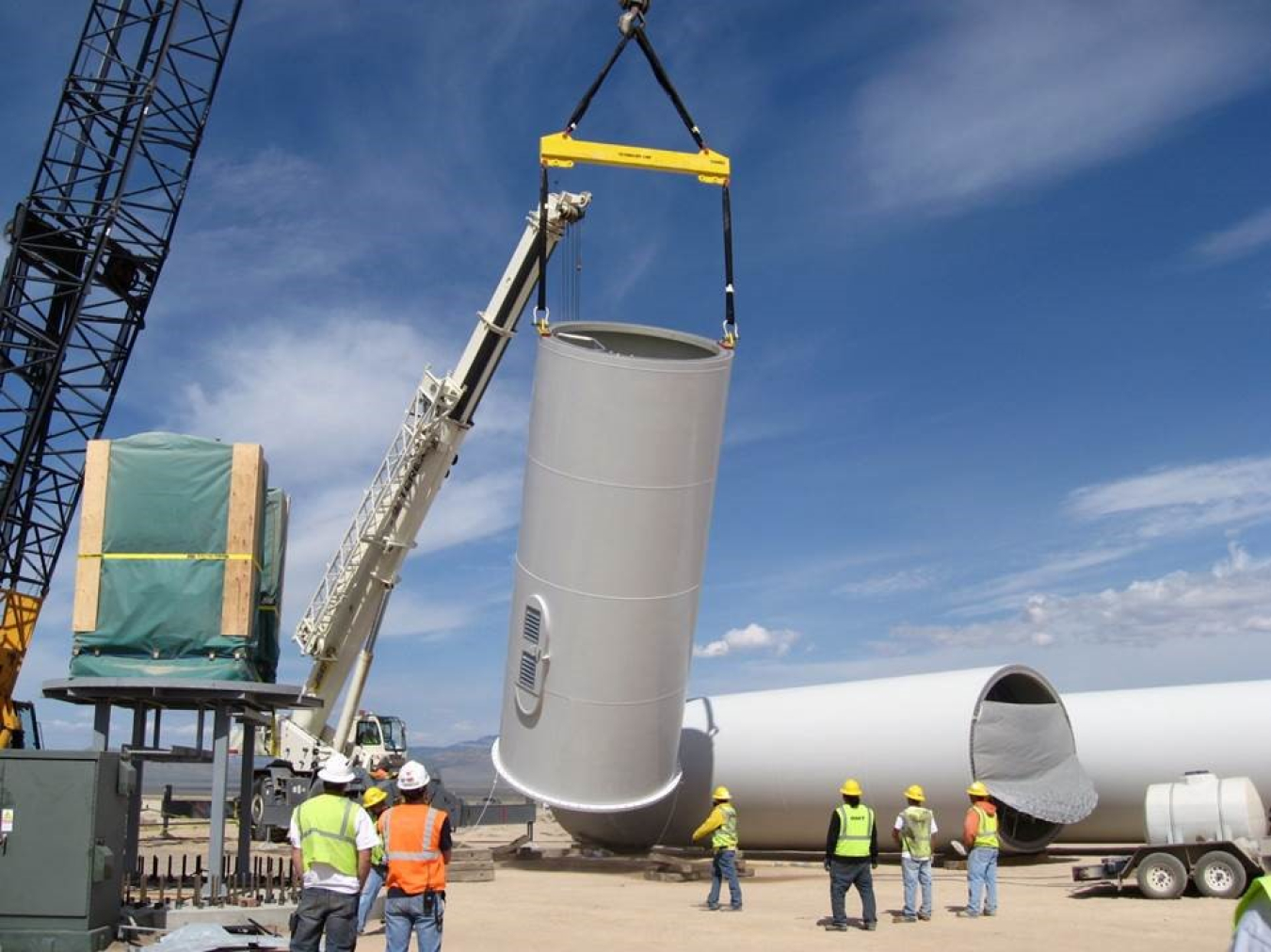Utah will be publishing the first locally written resource management plans defining county priorities for the development and use of federal lands.
August 9, 2017
Construction workers assembling a wind turbine tower in Milford, Utah.
As part of American Wind Energy Week 2017, the U.S. Department of Energy (DOE) highlights accomplishments of the Wind Energy Technologies Office’s Regional Resource Centers (RRCs). Located across six U.S. regions, RRCs encompass region-specific organizations that provide fact-based information from a range of local leaders with technical and community expertise. As part of DOE’s WINDExchange initiative, the RRCs produce relevant and actionable information about the benefits and impacts of wind energy and deliver that information to their local stakeholders. The centers focus on informing individuals, groups, communities, and policymakers to provide the best information to inform wind energy development in their regions.
In 2017, counties in Utah will be publishing the first locally written resource management plans (RMPs), defining county priorities for the development and use of federal lands. With more than half of Utah’s land under the jurisdiction of federal land management agencies, federal agencies and state and county governments find these RMPs indispensable in better planning and integrating the goals and policies of local jurisdictions when establishing new rules.
As part of this effort, the Four Corners Wind Resource Center (4CWRC) worked with county officials in Utah for more than a year to ensure that local stakeholders have the information they need to address wind energy development within the scope of their resource management plans. The 4CWRC provided background on wind energy and guidance language regarding wind resources, technology advancements, and development that all of Utah’s 29 counties, as well as seven multi-county associations and the Utah Association of Counties, could use to ensure that those unfamiliar with wind energy would have current information and appropriate language to meet Utah’s renewable energy target.
In addition to providing resources for counties statewide, 4CWRC also directly engaged 16 Utah counties, including six that were designated as high-wind locations (Tooele, Juab, Millard, Beaver, Iron, and Box Elder counties). The main topics of discussion included:
- County-developable wind resources and access to transmission, or lack thereof
- Wind and solar development regulations, typically at the utility scale
- Other issues: wildlife impacts, challenges for developing projects across land jurisdictions, and potential economic development benefits, costs and efficiencies of wind technology
Wind energy development on federal lands is not new in Utah; the state is home to the first utility-scale wind energy project built on federal land. Known as Milford Wind, the two-phase project has a total capacity of 306 megawatts (MW) and is located in Beaver and Millard counties, with approximately 30% of the project sited on federally managed land.
Phase I of the Milford project, completed in 2009, consisted of 97 turbines with a capacity of 204 MW. More than 250 development and construction jobs were supported by the project. The construction of Phase II supported an additional 200 jobs and was completed in 2011, adding 68 turbines and 102 MW of capacity to the project. Supporting more than 20 full-time operations and maintenance positions, the two phases of Milford Wind represent approximately $85.5 million in investments in Utah businesses, labor and subcontractors.
As new technology enables the economic development of lower-wind-speed resources, with the help of RRCs, federal, state and local governments can support the development of stable policy and provide certainty for appropriate wind development on public lands in Utah, potentially supporting more economic opportunities through wind energy in the state.

